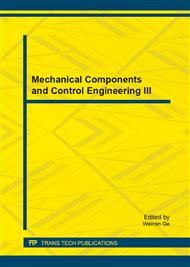p.1565
p.1569
p.1573
p.1577
p.1581
p.1587
p.1591
p.1597
p.1601
The Value of Ultrasonography Screening Trisomy 21 during the Second and Third Trimesters of Gestation
Abstract:
Objective To investigate the value of ultrasonography screening trisomy 21during the second and third trimesters. Methods Amniocentesis and cordocentesis were performed on 3110 and 187pregnant women respectively with indications for prenatal diagnosis to detect karyotype of the fetus during second trimester and late pregnancy, The detection rate of trisomy 21 was compared in pregnant women of different indications. To analyze the relationship between the ultrasonography abnormalities and trisomy 21. Results In chromosomal karyotypes analysis of 3110 pregnant women by amniocentesis, 41 trisomy 21 were detected, The detection rate of trisomy 21 was 1.32%. There were 98 in 3110 pregnant women with ultrasonography abnormalities, 6 trisomy 21 were found within them and the detection rate was 6.12%, the detection rate of trisomy 21 detected by ultrasound (6.12% ) was higher than the Down,s syndrome high risk group (0.98%), advanced age group (0.58%) Within 187 pregnant women of chromosomal karyotypes analysis by cordocentesis, 9 trisomy 21 were detected and the detection rate of trisomy 21 was 4.81% . There were 128 in 187 pregnant women with ultrasonography abnormalities, 5 trisomy 21 were found within them and the detection rate of trisomy 21 was 3.91% . (P <0. 05). Conclusions During the second and third trimesters, ultrasonography has great value .
Info:
Periodical:
Pages:
1581-1584
Citation:
Online since:
October 2014
Authors:
Keywords:
Price:
Сopyright:
© 2014 Trans Tech Publications Ltd. All Rights Reserved
Share:
Citation:


